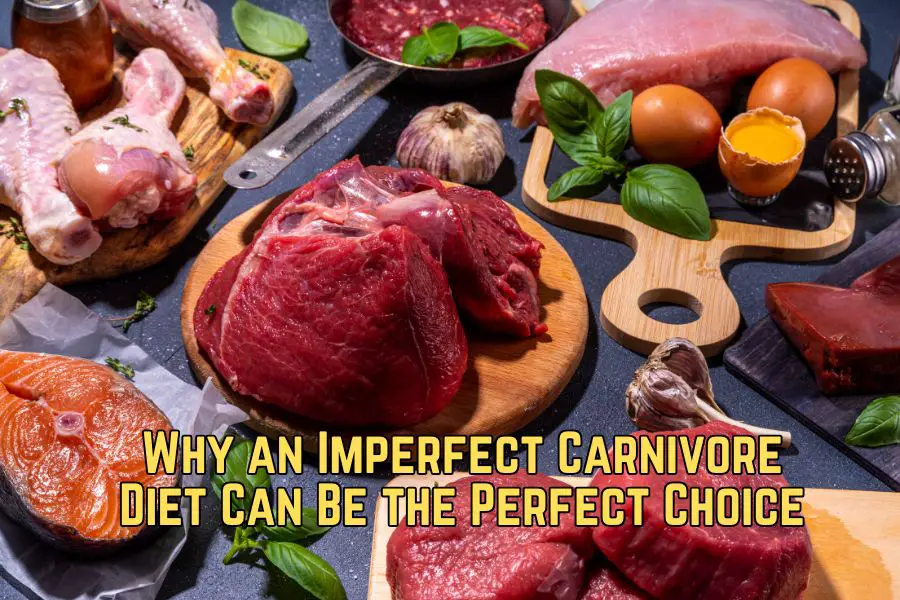Amber O’Hearn is a Canadian-born US-based data scientist. She has been studying and experimenting with the ketogenic diet since 1997 and the carnivore diet since 2009.
Amber has recently quit her day job to focus on researching, writing, and speaking about nutrition.
She has published several papers on evolution and health, given numerous speeches and interviews on the ketogenic diet and the carnivore diet, and is the author of the blog Mostly-Fat.com.
She also wrote an online book called “Eat Meat. Not Too Little. Mostly Fat: The Facultative Carnivore“.
In this post, we will look at Amber’s journey from the ketogenic diet to the carnivore diet, what she usually eats, and her recommendations for people who want to try out the carnivore diet.
How Amber O’Hearn discovered the carnivore diet
Amber O’Hearn was brought up vegetarian. Her vegetarian diet was a healthy version with mostly home-cooked meals featuring a wide variety of whole food.
Amber was chubby as a child but not excessively so, however, she began to gain weight when starting university.
After gaining 30 pounds in the first year of university, she decided to do something about it and her solution was to return to a healthy vegetarian diet and take up exercise classes. This did not help. Later on, she switched to a strict vegan diet but this also didn’t help with her weight problem.
In 1997, while in Russia for a semester as part of her Russian degree, she gave up her vegan diet and ate with her hosts (a diet rich in meat and animal fat). To her surprise, she had actually lost weight during this period.
In the same year, she also happened to read Protein Power by Dr. Michael Eades and Dr. Mary Dan Eades. Finding their nutrition advice logical and persuasive, she decided to follow a low-carb diet and quickly lost the excess weight and felt better than she ever had in her life.
Amber was able to lose 30 pounds initially on this low-carb diet but could only maintain that for a few years.
She gained a lot of weight during her pregnancies because of her huge carbohydrate cravings. Returning to her regular low-carb diet postpartum helped her to shed some but not all of the weight gains.
To her frustration, she also slowly gained more weight which she attributed to the anti-depressant medications she was on and getting older.
At one point, she weighed almost 200 pounds.
Towards the end of 2008, Amber found out about a group of people who were eating only meat and experiencing weight loss and many other health benefits.
She decided to give this diet a go and began to lose weight quickly and effortlessly. In addition, she also experienced significant improvements in her mood.
She was previously diagnosed with bipolar disorder and was put on various medications which made her life miserable and her mental health worse.
She was stunned that her depression and mood disorder was gone after she eliminated all plant food from her diet.
Amber O’Hearn has now been on the carnivore diet for about 12 years.
Her type II bipolar disorder is in complete remission. She is also off all psychiatric drugs.
So, initially a short-term attempt to lose weight on the carnivore diet eventually became a life-long passion.
As mentioned above, Amber O’Hearn has become a prominent figure in the carnivore diet movement, giving speeches and interviews, publishing research papers in this field and writing a book about the diet and her experience.
What does Amber O’Hearn eat?
Amber says the staples of her diet are ground beef, beef steak, lamb, eggs, pork, fish, and chicken. She also eats dairy but very occasionally because of its impact on her weight.
She prefers her beef steaks rare, ground beef raw or lightly seared, and short ribs roasted for several hours.
She eats fatty cuts of meat and sometimes adds butter, tallow, or lard depending on how lean the cuts are.
She also eats organ meat (mostly liver) and drinks bone broth occasionally.
Around 20% to 35% of her calories are from protein and 65% to 81% are from fat. The reason for her high fat intake is that she doesn’t feel as satiated and her mood is not as stable on a higher protein intake.
Amber eats about 600 g to 900 g of meat a day.
She usually eats just two meals a day, lunch and dinner. She follows her hunger signals: eat when she’s hungry and eat until she’s full.
When eating out, she might eat a bit of plant food (e.g. shredded radish, wasabi, ginger served with sashimi). Overall, plant food makes up an extremely small part of her diet.
She drinks black coffee regularly and occasionally herbal tea. She also drinks wine or whiskey on rare occasions.
She experiments with a variety of supplements but only takes consistently turmeric and citrus bioflavonoids (to reduce symptoms of endometriosis) and magnesium because she thinks the whole food chain is deficient in this mineral.
Her children are on low-carb but not exclusively carnivore.
Amber O’Hearn’s recommendation for those who want to try the carnivore diet
Try 30 days eating only meat
Amber’s recommendation is to simply eat nothing but animal-sourced food for 30 days.
Thirty days is long enough to become adapted but short enough to commit to doing it and not too intimidating.
Try to adhere to this meat-only diet for the entire time to maximize the chance of success. You can experiment with it later to see what plant food can and can’t be included in your diet.
Before you start
Before you start the experiment:
- Choose a 30 day period on your calendar when you can best carry out this experiment. Be aware of social situations when it’s difficult to adhere to your meat only diet and plan ahead
- Note your baseline measurements such as your weight and waistline
- Get rid of things you don’t want to eat during this period or store them somewhere out of sight to eat later
- Stock your kitchen with lots of food you want to eat during the experiment
- Prepare for side effects of the keto-adaptation period such as tiredness, low energy, headache and nausea. These will go away between a few days and a week.
What to eat
Follow five simple rules:
- Eat nothing but meat. Pure meat is better than processed meat. You can add eggs, cream and butter but some people don’t do well with dairy so it’s better to try it out after the initial trial
- Eat fatty meat, e.g. juicy steak, juicy chicken thighs, hamburgers made from 85% lean, and salmon
- Eat plenty of meat. Eat to satiety at every meal
- Drink water, no sweet beverages, but coffee is okay
- Get plenty of salt. People on the initial stage of a keto diet need extra salt.
What to look for during this experiment
- No more cravings
- Losing excess weight
- Losing excess body fat around the waistline
- Better and more stable energy levels
- Reduction in heartburn, bloating, gas and other digestive problems
- Improved mood
- Improved focus and mental endurance
- Reduction or cessation of seizures if you suffer from epilepsy.
Avoid the following mistakes
- Going low-fat
- Limiting your calorie intake
- Eating a moderate diet with a little bit of carbohydrate
- Making exceptions
- Making sure you get fruits and vegetables.
References
Carnivore Queen: Hacker O’Hearn on the Magic of Meat
L. Amber O’Hearn – Ketosis Without Starvation: The Human Advantage
Ketowomanpodcast #19: Amber O’Hearn – Carnivore Q&A
Eat Meat. Not Too Little. Mostly Fat: The Facultative Carnivore
If you find this post helpful, please consider sharing this post with your family, friends, and followers, that would be much appreciated.
Please also check out my library of articles on the carnivore diet here which is updated regularly.
Disclaimer: The information in this post is for reference purposes only and not intended to constitute or replace professional medical advice. Please consult a qualified medical professional before making any changes to your diet or lifestyle.





